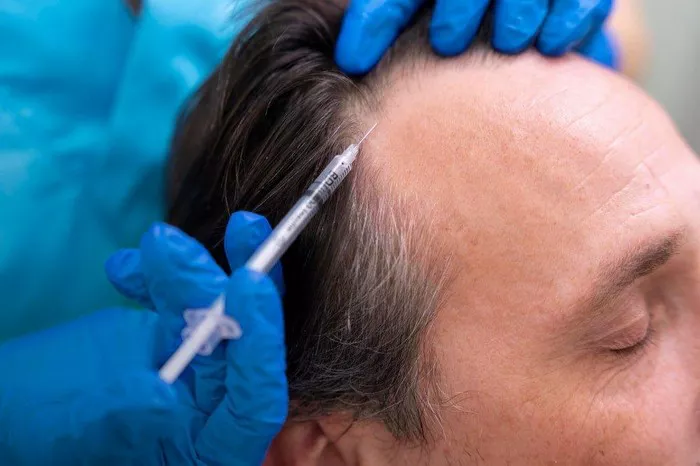Hair transplant techniques have evolved significantly over the years, offering more natural-looking and effective solutions for individuals experiencing hair loss. Two popular methods in this field are Direct Hair Implantation (DHI) and Follicular Unit Extraction (FUE). Both techniques have their own set of advantages and are suitable for different patient needs. This article will provide a detailed comparison of DHI and FUE, helping you understand which method might be better for your specific situation.
Understanding DHI and FUE
Direct Hair Implantation (DHI)
DHI is a specialized hair transplant technique that involves using an implanter pen to directly implant hair follicles into the recipient area. This method offers high precision and control over the angle, direction, and depth of each graft, resulting in natural-looking results.
Follicular Unit Extraction (FUE)
FUE is a minimally invasive technique that involves extracting individual hair follicles from the donor area using a small punch tool. These follicles are then transplanted into the recipient area, providing a natural-looking hairline and minimal scarring.
Comparing the Results
Natural – Looking Appearance
DHI’s Precision
DHI often has an edge when it comes to creating a natural – looking hairline. The direct implantation method using the Choi Implanter Pen allows for highly accurate placement of follicles. The surgeon can closely mimic the natural growth pattern of hair, as they have real – time control over the angle and depth of each implant. This results in a more seamless integration of the transplanted hair with the existing hair, giving a very natural appearance.
FUE’s Results
While FUE can also achieve natural – looking results, the pre – made incisions in the recipient area may sometimes limit the precision of follicle placement. In some cases, the incisions may not perfectly align with the natural hair growth direction, leading to a slightly less natural appearance. However, with an experienced surgeon, FUE can still produce excellent, natural – looking results.
Hair Density and Growth
FUE’s Follicle Yield
FUE has been well – established for its ability to transplant a large number of follicular units. The extraction process can be relatively efficient, allowing for a high follicle yield. This makes it suitable for patients with extensive hair loss who require a significant number of follicles to achieve the desired density.
DHI’s Potential for Growth
DHI, on the other hand, may have a higher survival rate of transplanted follicles due to the reduced trauma during the implantation process. The direct implantation method minimizes the time follicles are exposed outside the body and reduces the risk of damage to the follicles. This can potentially lead to better hair growth and density over time, although the number of follicles that can be transplanted in a single session may be slightly lower compared to FUE.
Recovery Process
FUE Recovery
Healing Time
After an FUE procedure, the small circular incisions in the donor area and the pre – made incisions in the recipient area need time to heal. The donor area may experience some swelling, redness, and discomfort for the first few days. Scabs may form at the extraction and implantation sites, which usually fall off within a week or two. Patients are generally advised to avoid strenuous activities for a few days and to follow a strict scalp – care routine to promote healing.
Potential Scarring
The small circular scars left by the punch extractions in the donor area are usually less visible, especially when the hair is grown out. However, in some cases, if the extraction is not done properly, there may be more noticeable scarring.
DHI Recovery
Reduced Trauma, Faster Recovery
DHI’s direct implantation method results in less trauma to the scalp. Since there are no pre – made incisions in the recipient area, there is less bleeding and swelling. Patients typically experience less discomfort during the recovery period. The healing process is often faster, allowing patients to return to their normal activities more quickly.
Minimal Scarring
The use of the Choi Implanter Pen in DHI leaves very small and less noticeable scars. The direct implantation technique also reduces the risk of scarring in the recipient area, contributing to a more aesthetically pleasing outcome.
Case Studies
Case 1: Mark’s Experience with FUE
Mark, a 35 – year – old man with male – pattern baldness, opted for an FUE hair transplant. The surgeon was able to extract a large number of follicles, and after the implantation, Mark saw a significant improvement in his hair density. However, in the initial weeks, he experienced some discomfort and had to be careful with his scalp care. After a few months, the results were satisfactory, but he noticed that the hairline was not as natural – looking as he had hoped.
Case 2: Sarah’s Experience with DHI
Sarah, a 40 – year – old woman with thinning hair, chose DHI. The direct implantation process was quick, and she experienced minimal discomfort during and after the procedure. The hairline created by the surgeon using the Choi Implanter Pen looked very natural. Sarah was able to return to her normal activities within a few days, and over time, the hair growth was healthy and dense.
Conclusion
Determining whether DHI is better than FUE depends on individual preferences, needs, and circumstances. DHI offers advantages in terms of natural – looking results, reduced trauma, and faster recovery, but it comes at a higher cost. FUE, on the other hand, is more cost – effective and can transplant a large number of follicles, making it suitable for patients with extensive hair loss. Ultimately, potential patients should consult with a qualified hair transplant specialist. The specialist can assess their specific hair loss situation, discuss their expectations, and recommend the most suitable technique, whether it’s DHI, FUE, or another alternative.
Related topics:
- FUE vs DHI Hair Transplant: What’s the Difference?
- DHI Method: All You Need to Know
- How Effective is DHI Hair Transplant?


